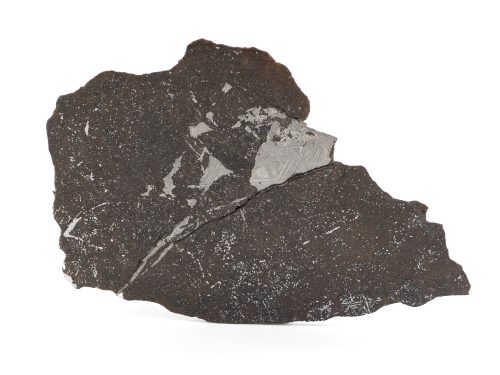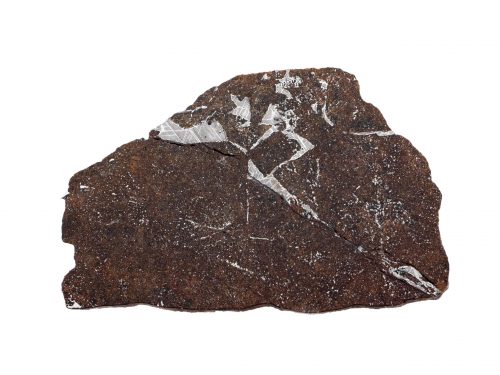Northwest Africa 13917 | Winonaite
Winonaite, a primitive achondrite
Purchased in 2020 in Morocco
NWA 13917 proved to be a remarkable find. The stone was classified as a Winonaite, a primitive achondrite.
Primitive achondrites are “non-chondrites,” in that they are pieces of differentiated planetary bodies, like the Moon or Mars, which are defined as having distinct layers, like a core, mantle, and crust. Planetary differentiation occurs on planets, dwarf planets, asteroids, and moons. They are deemed primitive because scientists have observed that some have relic chondrules and compositions that closely resemble those of chondrites, meaning that the stones have retained much of their original chondritic features.
The interior of NWA 13917 reveals fine-grained metal veins, resembling lightning bolts, set in a mosaic of minerals. Forsterite, also known as “white olivine,” was also detected in NWA 13917; in 2005, data returned by NASA’s Stardust probe indicated that forsterite is present in cometary dust. In 2011, NASA’s Spitzer Space Telescope observed tiny crystals of forsterite in clouds of gas surrounding a forming star. NWA 13917 exhibits a low shock stage, meaning that the matrix has not been extensively fractured.
Showing all 2 results

